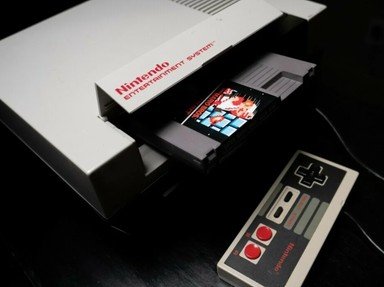Quiz Answer Key and Fun Facts
1. Game 20: You have been victorious against many enemies. Deep in a labyrinth, you discover a giant serpent jumping into different lakes of lava. You must jump from platform to platform, all the while hitting the giant serpent on his head, which is his only vulnerability. What's the game?
2. Game 19: Some manuals don't give you much to go on as far as strategies or even information regarding the villains of the game. One such manual only lists the points each boss is worth. Here is the information. "Grim Reaper: 7,000 points; The Count!: 50,000 points". The manual also states Queen Medusa is worth 3,000 points and Frankenstein and Igor are worth 5,000. What's the game?
3. Game 18: It has become well known that "Super Mario Bros. 2" was not originally a Mario game. According to many sources, what Nintendo employee blocked the release of Japanese version of "Super Mario Bros. 2" (known outside Japan as "The Lost Levels") due to the high challenge and gimmick-filled gameplay. This decision led to Nintendo adapting "Doki Doki Panic" into a Mario game. Who is the employee?
4. Game 17: Your father Ken has been killed by Jaquio. With elaborate cutscenes between the stages, which at that time were unprecedented, the plot of the game unfolds. Eventually you will face not only your father but Jaquio himself. What's the game?
5. Game 16: "Mega Man 3" appeared on the cover of which Nintendo Power issue?
6. Game 15: "River City Ransom" is part of the Kunio-kun series by Technos. Chronlogically in order of release date, where does it fall in the Kunio-Kun series?
7. Game 14: This game famously featured a level editor. What's the title?
8. Game 13: The "Mario Kart" series may have perfected using weapons to get ahead on the racing track, but what title did it first on the NES?
9. Game 12: You're in the jungle, blasting alien scum. There are bullets coming from every direction. Ultimately you must fight confront the alien masterminds intent on taking over the planet. No worries, however, for you know this secret code: Up, Up, Down, Down, Left, Right, Left, Right, B, A, Start. What's the game?
10. Game 11: Who is the final boss of the first "Final Fantasy" game?
Source: Author
berenlazarus
This quiz was reviewed by FunTrivia editor
kyleisalive before going online.
Any errors found in FunTrivia content are routinely corrected through our feedback system.
